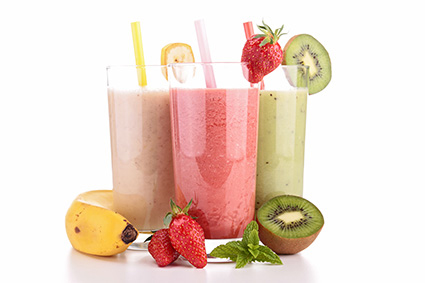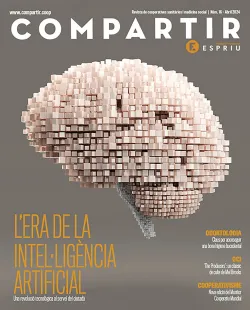
Dishes for recovering from an illness
There is no magical recipe for recovering from an ailment. However, there are a series of foods and nutrients that can help us to get better and to strengthen our immune system.
It is no secret that a correct diet is totally necessary both to face up to, and recover from any illness. After a period of bed rest, our muscles normally have become weakened and we might have even lost some weight. When we are ill, our body requires more energy because the immune system works to fight the pathogens and this energy can be acquired through foods rich in proteins, vitamins and minerals.
The Nutrition Coordinator at the HLA Group, Rocío Bueno, states that “it is essential to maintain a good diet to strengthen the immune system. Fruit and vegetables must be a priority in our diet, making up around 50% of everything we eat. Macro-nutrients such as carbohydrates, proteins and healthy fats are also important.”
But how do we get the correct nutrients for our organism to run properly? The answer is very simple. Apart from following a varied diet in a healthy setting, Bueno explains that “we can eat carbohydrates through cereals, bread or tubers and good quality proteins through meat, fish, eggs or legumes. Regarding healthy fats, they mainly come from extra virgin olive oil and products such as avocados or dried fruit.”
Protein sources
It is worth mentioning that there are different types within the universe of proteins. On the one hand, there are proteins that come from animals (meat, fish, eggs and dairy products) and on the other hand, there are vegetable proteins, which often pass by unnoticed and are equally relevant.
“Legumes such as beans, lentils, soya or peanuts are great sources of protein. And if they are combined with cereals, they promote absorption,” Bueno points out. She also adds that “it is not strictly necessary to eat animal products. If a good guideline of combinations is followed, vegans and vegetarians will only need a vitamin B12 supplement, as this vitamin only comes from the animal kingdom.”
Suitable percentages
Experts in nutrition from the Harvard Public Health School designed a guide for preparing balanced, healthy meals. “The Harvard plate consists of 50% fruit and vegetables, which could be in a salad or in a vegetable stir-fry; 25% carbohydrates, preferably wholemeal and finally, 25% of protein,” according to Rocío Bueno. An example for following this nutritional method could be as easy as roast chicken with potatoes, with each of these occupying 25% of the plate, while the other half is filled with sautéed vegetables. If there is dessert, fruit is best; any dressing should use olive oil and water should be used as a drink to complement the meal.
Balanced suggestions
As cultural tradition and advice given by our grandmothers indicate, the classic vegetable soup is particularly revitalising and healing. However, in order to try to avoid refined flours, instead of using pasta, we could incorporate spelt or wholemeal noodles, or even substitute them with chickpeas or quinoa. Rocío Bueno explains that “normally we remove the vegetables that we use to cook the broth, but we could reuse them and even include them in pieces or pureed.”
Another feasible possibility would be a cream made of all types of vegetables (carrots, pumpkin, courgettes, onions, etc.), with chickpeas and chopped boiled egg. The combination of 50% vegetables and 50% legumes is also allowable, because the latter provide proteins and carbohydrates at the same time. With a similar percentage base, a warm salad of white beans and roasted vegetables would also be a good choice.
And what about spices? Do they help to beat illness in any way? Bueno sustains that “the role of spices on the immune system is minimal. We usually eat a small amount, but it is true that every little helps.” Ginger has anti-inflammatory properties, as does turmeric, which is also an antioxidant.
What should we avoid?
Now that we are clear as to which foods are appropriate for getting back to our normal way of life, we should also discover the ones that we should avoid. “As far as possible, products with refined flours, bad quality fats, saturated or trans, and palm oil should be avoided. Apart from the fats contained in palm oil, it is also very harmful to the environment. It is important to consume local, fresh produce and if possible, seasonable goods. The more elements without labels in our shopping bag, the better. In spite of the fact that there are increasingly better processed goods, you cannot compare some biscuits with a jar of beans,” Bueno concludes.

Milkshakes and smoothies
It is often difficult to start cooking if we are lacking in energy and we have lost muscle strength. If what we need is calorie and nutrient intake without much effort, milkshakes and smoothies are the perfect solution. The drinks that include fruit and some kind of dairy product (milk, yoghurt or cheese) are a good option for beating fatigue, but under no circumstances should they replace a meal.
Aimed at strengthening defences and preventing or recovering from illness, a blueberry smoothie contains a high proportion of polyphenols, antioxidants, vitamin D and zinc. One made from pineapple, tangerine and ginger, on the other hand, is an option that is rich in vitamin C and antioxidants.
For a summertime breakfast, we could choose a green smoothie of kale, spinach, celery and fruit such as banana and apple contains selenium, zinc and vitamin C. Flax seeds can be added to give it an extra punch and improve digestive health.
Finally, another proposal is beetroot juice with carrot, a home remedy that is rich in beta-carotene, a natural antioxidant that helps to synthesise vitamin A, along with iron, which is essential for forming haemoglobin and fighting against anaemia.




